9 Things to Do in Sirmione: A Surprising Pearl on Lake Garda’s Shores


If you’ve ever dreamed of finding a place that perfectly blends Roman ruins, medieval castles, turquoise waters, and thermal baths—all packed onto a skinny little peninsula sticking out into Lake Garda—Sirmione is your place.
It’s a destination where ancient history slaps you in the face (in the best way), and the views make you question why you ever bothered with Instagram filters.
I stumbled on Sirmione while exploring the Lake Garda and Verona region in 2024, and what was supposed to be a casual half-day trip turned into one of the highlights of the entire journey through Italy.
Whether you’re into architecture, nature, history, or just want a damn good gelato with a Roman villa in the background, Sirmione delivers.
Here’s everything you need to know—and everything you absolutely shouldn’t miss.

Standing on ancient stones, surrounded by the calm of Lake Garda and the timeless magic of Sirmione
What are the best things to do in Sirmione in Italy?
-
Visit Grotte di Catullo—a Roman villa that redefines ruins for me
-
Walk the fairytale bridge to Sirmione
-
Explore Scaligero Castle—tiny but mighty
-
Get lost in the Old Town streets
-
Relax in Terme di Catullo—because the Romans knew how to spa
-
Don’t miss the little things: Kiss Please & Jamaica Beach
-
Eat like a local (and maybe get a table with Roman views)
-
Bonus day trip—Castello Scaligero di Valeggio sul Mincio & Borghetto
-
Sanctuary of Madonna della Corona
Sometimes, all you need to do is take the first step... I've filtered out the best hotels in Italy for you
Save it for yourself to come back to later, or share with your friends on social media!
1. Visit Grotte di Catullo—A Roman Villa That Redefines “Ruins”
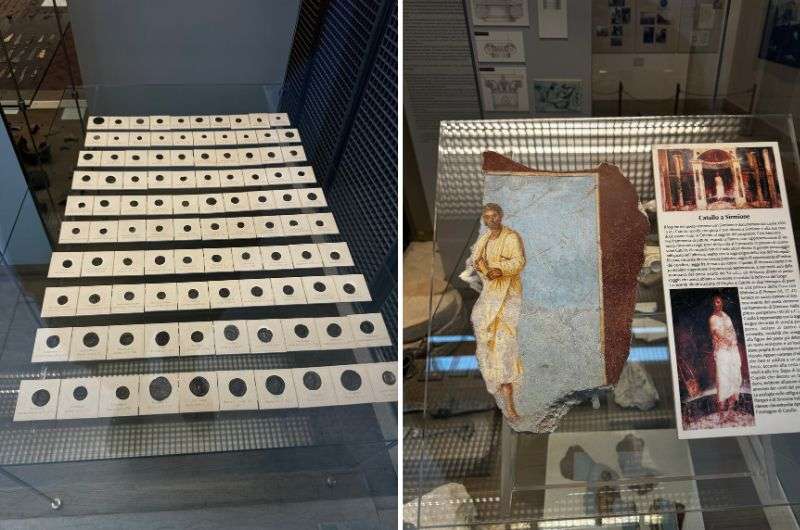
Ancient coins, frescoes, and a peek into Roman luxury living—Grotte di Catullo’s museum brings 2,000 years of history to life
Now, let’s talk about the real showstopper: Grotte di Catullo. Despite the name (“grotte” suggests caves), this is actually the massive, 2,000-year-old ruins of a Roman villa, dramatically perched at the very tip of the Sirmione peninsula.
For about 10 minutes, I was a bit disappointed—duh, I was expecting a cave. Well, what I got was much better.
This place is mind-blowing—not just because of the views (which are incredible), but because of the scale. The villa was built during the reign of Emperor Augustus (around year 0), and it was monstrous: the main building alone covered 17,500 m². That's not a typo. It’s like the Roman version of a Beverly Hills mansion—with its own thermal springs, naturally. Only bigger and better.
From the ruins, I got panoramic views of Lake Garda and the Alps, just like the Roman elite once did—I always feel like one of them, so it's fitting.
Info panels around the site show what the place probably looked like, and spoiler alert: it was opulent AF.

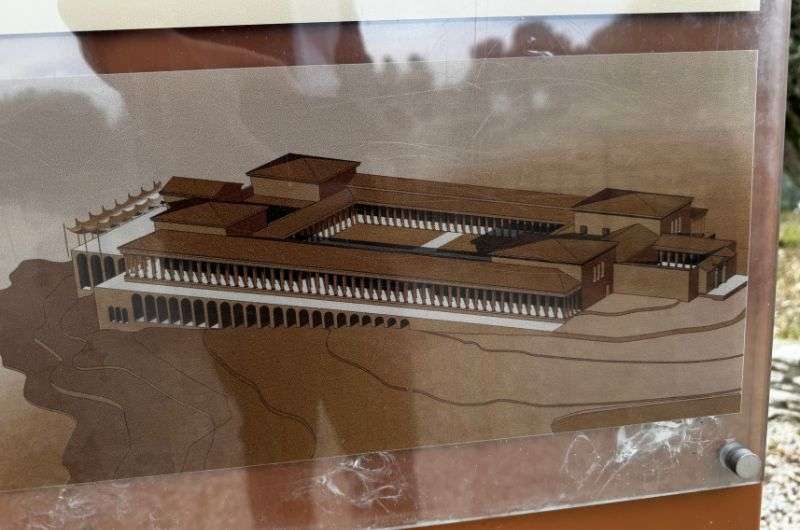
Discover Sirmione’s true hidden gem
And it’s not just stones and broken columns. There’s also a museum on-site, filled with:
-
Frescoes and mosaics
-
A look at the villa during excavation
-
Artifacts from prehistoric to medieval times
-
Surprisingly large collection of items from the Lombard period
Entry: EUR 10
Bonus: Free audio guide on-site
Time needed: I spent 1,5 hours—I would spend more, but I was pressed for time.
This is one of those places that totally flies under the radar, a true hidden gem. I hate the phrase “hidden gems”, but this place is a real hidden gem, at least if you are not Italian.
If you're even remotely into Roman history or just want to see something epic without the usual crowds, don’t skip this.
2. Walk the Fairytale Bridge into Sirmione
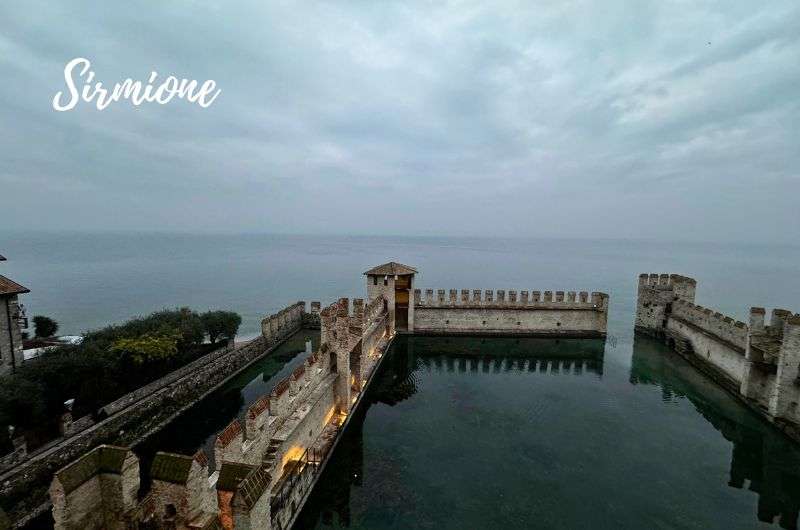
Cross Scaligero Castle Bridge and enter Sirmione
Sirmione is technically a peninsula, but the moment you cross the iconic Scaligero Castle Bridge, you’ll feel like you’ve stepped onto a secret island. The castle forms a kind of gate to the town—an impressive fortress rising straight out of the water like something out of a knight’s fever dream.
From the mainland, the bridge leads directly into the fortified village. The layout hasn’t changed much since the 14th century, and neither has the vibe. It’s cobbled, charming, and filled with that mix of Italian leisure and centuries-old stone that makes you want to slow down, breathe in the history, and take 500 pictures you’ll never delete.
3. Explore Scaligero Castle—Tiny But Mighty!
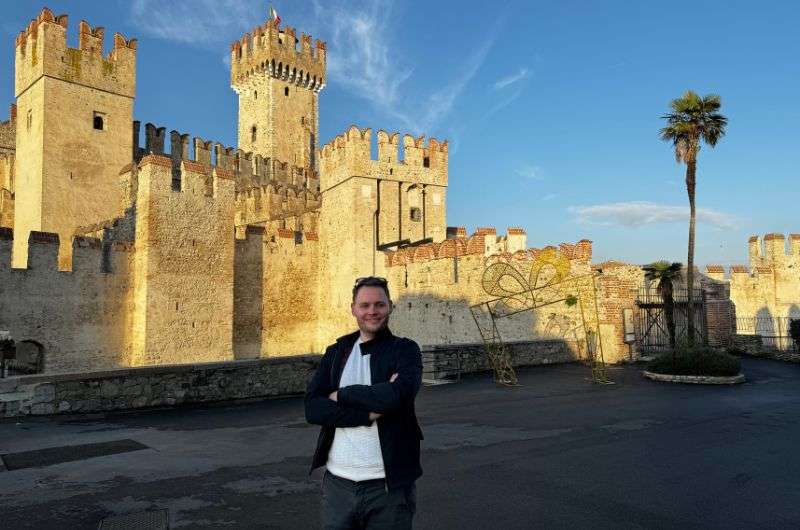
Here I am at the castle—Castello Scaligero
Let’s be honest: some castles are better on the outside. Sirmione’s Scaligero Castle is one of them—but oh boy, what an outside it has.
Built around 1320 by the powerful Scaligeri family (think Game of Thrones, but with better pasta), the castle is surrounded on all sides by water.
From the ramparts and towers, you get panoramic views of the Alps and the seemingly endless blue of Lake Garda. It’s the kind of place I imagined as a kid when someone said the word "castle."
Inside, there is basically nothing—but you can walk the walls and climb the main tower.
Don’t miss the Darsena, the castle’s fortified harbor (entry is a separate EUR 2). The defensive engineering here is genuinely impressive and also surprisingly photogenic. Think Venice meets the Middle Ages.
Entry: EUR 8 per person (in retrospect, it is a bit pricey for what you get)
Time needed: max. 30 minutes
Pro tip: Even in the off-season, it gets crowded. Come early or late in the day.

4. Get Lost in the Old Town Streets
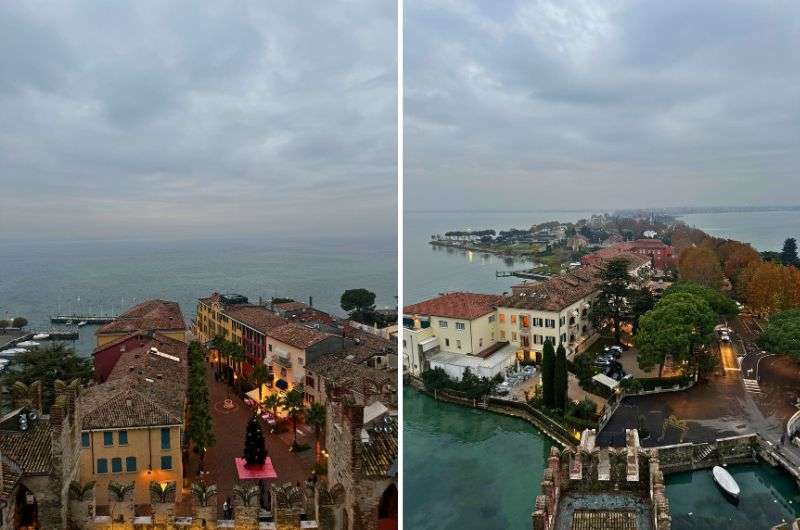
A picturesque escape of cobbled streets, Roman ruins, and citrus surprises
Once inside Sirmione proper, you're in for a treat: narrow alleys lined with gelaterias, Roman ruins hidden behind restaurants, and a surprising number of orange trees—yes, even during my visit in November.
This is a perfect city to wander with no plan—I don’t like walking without plans, but I could survive it here.
Everything is within walking distance, and you’ll randomly stumble across charming piazzas, sun-drenched courtyards, and that one café where you’ll order an Aperol Spritz and then never want to leave.
The whole peninsula is walkable end-to-end (around 3–5 km depending on your detours), so pack comfy shoes and take your sweet time.
5. Relax in Terme di Catullo—Because Romans Knew How to Spa
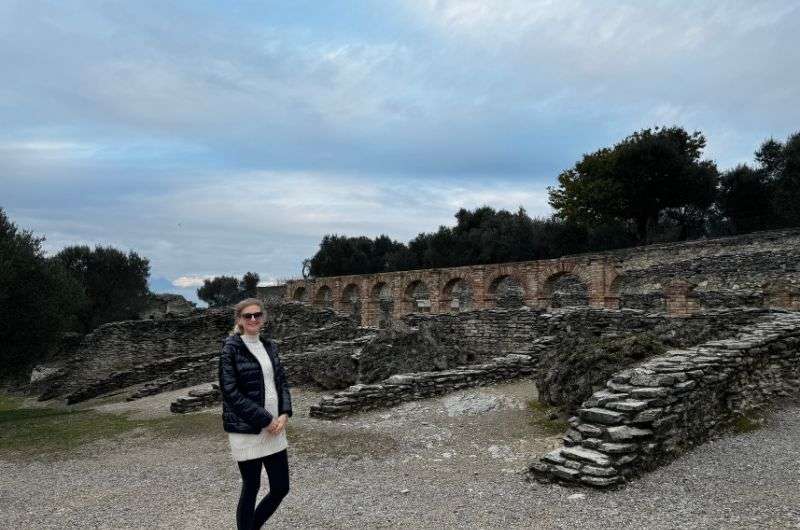
Unwind like the Romans at Terme di Catullo
After all that walking and castle-climbing, I treated myself to some good old Roman-style relaxation at the Terme di Catullo. These modern thermal baths are built in honor of the ancient ones once used by the villa’s residents.
The spa offers:
-
Indoor and outdoor thermal pools
-
Saunas and steam rooms
-
Killer views over the lake
-
That glorious “I’m so relaxed I forgot what year it is” feeling
It was the perfect way to end a day steeped in history—soaking in the same natural thermal waters that once pampered toga-wearing aristocrats.
It got really chilly in the evenings in November, so I was really happy to have this place.
6. Don’t Miss the Little Things: Kiss Please & Jamaica Beach
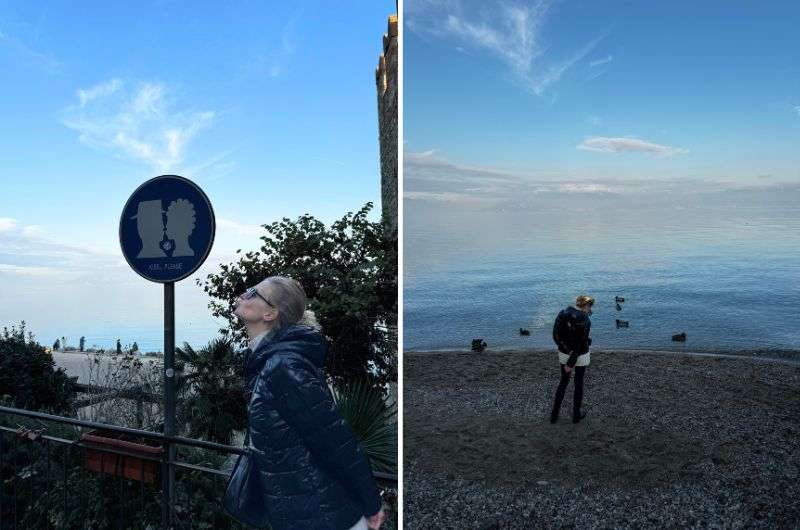
Lake Garda vibes: kissing under the Alps (✓), freezing toes at Jamaica Beach (✓)
Sirmione doesn’t just wow with history—it has a sense of humor too. Absolutely randomly, I went and visited a place which later appeared to be somehow famous and iconic: the “Kiss Please” sign, a quirky little photo op that’s become something of a local legend. As the sign says: find someone, and kiss ‘em! Bonus points if the Alps are behind you.
Well, I was there with my girlfriend, so I could not approach some poor unsuspecting women nearby and kiss them. Granted, that would shoot to the top of the list of the weirdest and creepiest things I’ve done... so I just kissed my girlfriend. She was happy, and I was less of a creep.
Don’t forget to visit Jamaica Beach
Then, I went to Jamaica Beach, one of the most beautiful and unique beaches on Lake Garda. I visited over 20 beaches in Garda over the years and I must say this one is very different. I don’t see the relation with Jamaica, but whatever. It was on my route to Grotte di Catullo.
It’s not your typical sand-and-umbrella setup—this one’s all natural limestone slabs dipping straight into the water. On sunny days, it’s probably paradise. On a November evening... well, it was nice and cold.
7. Eat Like a Local (And Maybe Get a Table with Roman Views)

Italian cuisine
Sirmione may be small, but it punches way above its weight in the food department. Many restaurants here come with a side of ancient stonework or lakefront sunsets, which is honestly how all meals should be served.
Try:
-
Risotto alla tinca—a local specialty made with fish from Lake Garda
-
Fresh pasta with lake prawns
-
Lemon gelato—made with lemons grown right along the lake
One restaurant even had Roman columns as interior décor. No big deal.
Pro tip: You can skip the local gelato; it's really poorly reviewed and tasted even worse.

Practical Tips for Visiting Sirmione

Castello Scaligero di Sirmione
-
Getting there: An easy drive from Verona or any of the Lake Garda towns. If you’re coming from Milan or Venice, it’s about 1.5–2 hours.
-
Parking: About EUR 1/hour, which is surprisingly reasonable. Use the EasyPark app for hassle-free payment right near the waterfront. Whenever I can use it. It makes life so easy.
-
Best time to visit: Shoulder seasons (April–June or September–October) are ideal. Summer gets very busy. I mean, extremely busy. People-on-people busy.
-
How long to stay: You can see the main highlights in a half-day, but a full day lets you really enjoy it without rushing. Trust me, you'll want the extra time.
Bonus half-day trips from Sirmione
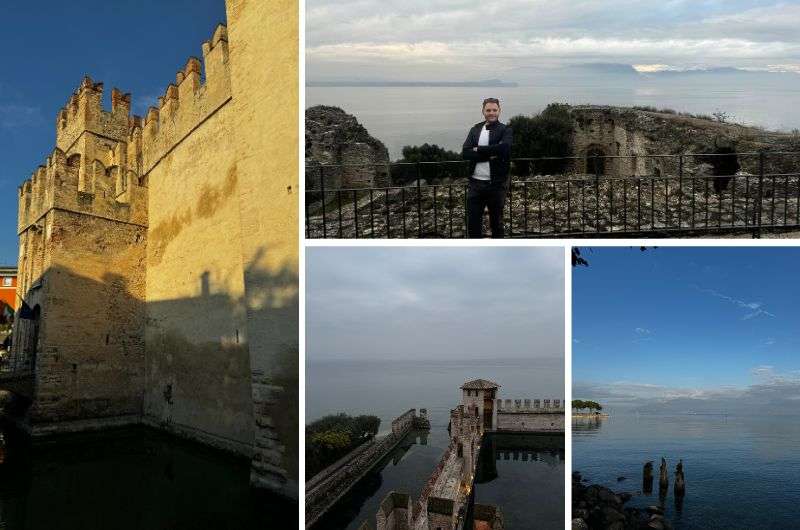
Snapshots from my Sirmione trip
8. Castello Scaligero di Valeggio sul Mincio & Borghetto
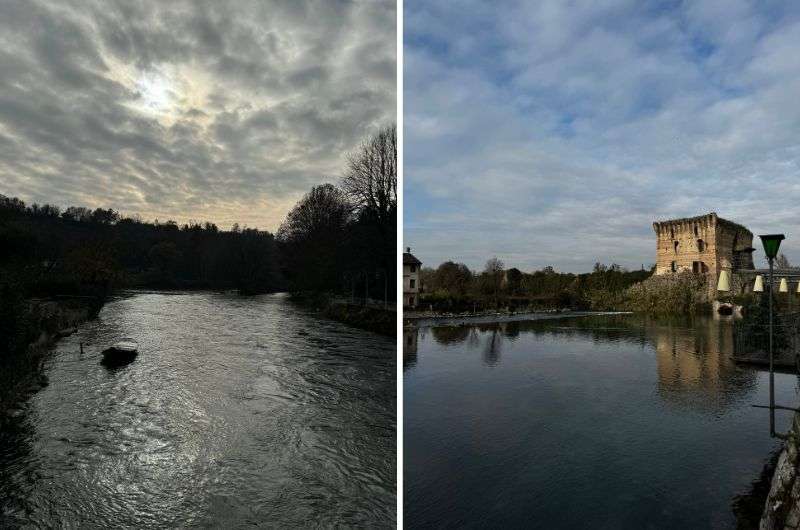
Think of a Game of Thrones, but with hearty Italian flavors and a fine glass of Valpolicella to complete the scene
Just a short hop from Sirmione is Valeggio sul Mincio, home to another Scaligero castle that feels straight out of a medieval fantasy.
Built by the Lords of Verona in 1284, this fortress sits high above the Mincio River, guarding the borderlands between the Scaligeri and the mighty Venetian Republic.
Only part of the castle is open to the public—and it’s partially in ruins—but wandering its ramparts, it’s easy to imagine knights defending the surrounding villages centuries ago.
Right below the castle is Borghetto, a medieval village so pretty it almost seemed fake—until I realized the river running through it is crystal clear and the bridge is a gigantic, fortified masterpiece called the Ponte Visconteo.
It was built in the late 14th century by the Duke of Milan to secure his territories and still stands as one of the most impressive pieces of military engineering of its time.
Vibe check: Think Game of Thrones, but with pasta and a good bottle of Valpolicella.
What to do:
-
Stroll along the river and over the massive bridge (it gave me serious “twin towers from GoT” flashbacks).
-
Visit at sunset—the lighting and reflections are unreal.
-
Grab dinner in Borghetto — lots of charming riverside restaurants.
Pro tip: You’ll even spot a few Palladian villas nearby, like Villa Sigurtà.
9. Sanctuary of Madonna della Corona
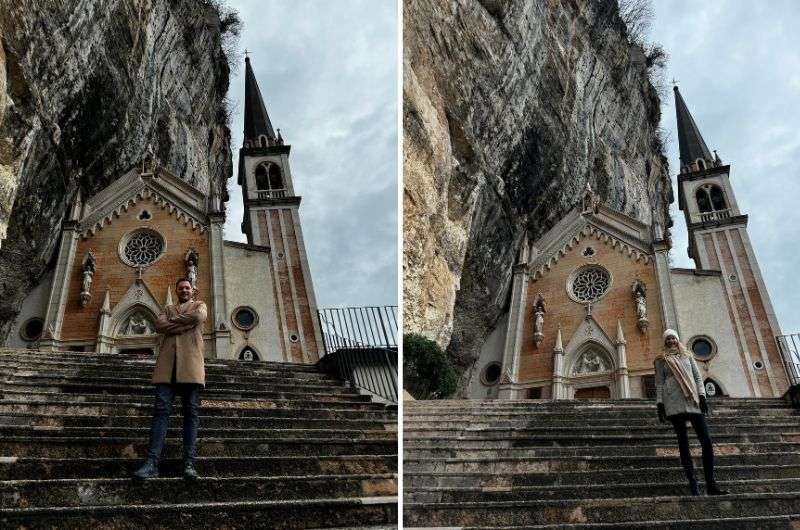
Madonna della Corona—A serene sanctuary carved into Monte Baldo’s cliffs
This one’s not exactly on the beaten path—which makes it even better.
Perched dramatically on the cliffs of Monte Baldo, the Sanctuary of Madonna della Corona is one of the most spectacular and spiritually charged places in northern Italy. And yeah, it takes a bit of effort to get there, but it’s worth every step.
I went here almost by accident. After being in Italy for 3 weeks, I just could not bear another city, so I wanted to see something in nature, and the Alps. What a coincidence it was that I was so close by!
I started in the mountain village of Spiazzi, where parking is free (bless them). From there, I descended about 400 meters (not in elevation—just in distance) to reach the sanctuary itself.
On the way back up, I took Via Crucis, a classic Stations of the Cross setup with 13 bronze sculptures—beautifully detailed, dramatic, and surprisingly moving.
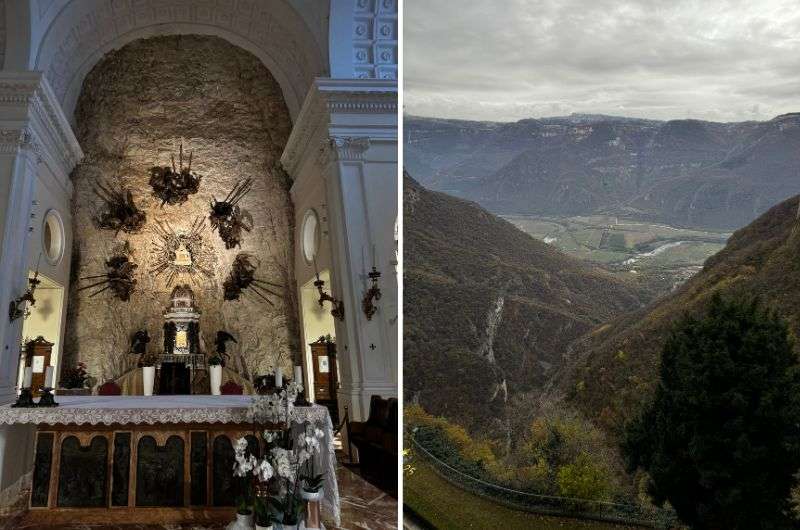
Inside, the church is small but mind-blowing—as it seems to emerge seamlessly from the sheer cliff face
Also, I felt like a teacher; I could explain its meaning to my girlfriend, and honestly, I know almost nothing about it.
Here’s the twist: unlike most religious depictions, this Calvary path goes downhill, not uphill—a rare inversion of the traditional “path to Golgotha.” I loved that; it disoriented me quite a bit, thinking I was going in the wrong direction. I got very confused for a moment there!
And the views? They were absolutely epic. I caught myself literally staring out over cliff faces and valleys, with the sanctuary wedged right into the rock.
Inside, the church is small but mind-blowing—basically carved into a vertical cliff wall. Even if you’re not religious, it’s hard not to feel something here. Spoiler alert: I did not feel anything. OMG, what's wrong with you, Jan? Yeah, I am just not into this sh!t.
Pro tip: Keep an eye out for a few carved spelling mistakes along the Calvary Trail. Even sacred sites aren’t safe from typos. Those Italian religious copywriters...
Fun fact: Station 14 shows Jesus in the cave awaiting resurrection (another rare depiction), and Station 15 brings the full redemption arc. Nature + faith + architecture = perfection.
Final Thoughts: Is Sirmione Worth Visiting?

Sirmione, a tale of Roman ruins and stunning lake views
Ohhh, definitely. Whether you’re into history, hiking, castles, Roman ruins, or lakeside lounging, Sirmione offers an unforgettable mix of all the above—with a few surprises thrown in for good measure (hello, Game of Thrones bridge).
Every visit I make to Lake Garda just reinforces one thing: this place is pure magic. Sirmione, in particular, feels like it was handcrafted by a team of Roman architects, medieval warlords, and Instagram travel influencers—and somehow, it works.
So yeah, put it on your map. High priority. And when you’re standing at the tip of the peninsula with 2,000-year-old ruins behind you and the Alps glowing in front of you, you’ll know exactly why.
Sirmione might be the star of the show, but its surroundings add serious depth to your Lago di Garda experience. Between cliffside sanctuaries, castle ruins, and storybook villages, the area offers so much more than just lakeside relaxation.
Whether you’re road-tripping, day-tripping, or just feeling spontaneous, these bonus destinations prove one thing: Northern Italy does not know how to be boring.
Sometimes, all you need to do is take the first step... I've filtered out the best hotels in Italy for you
Save it for yourself to come back to later, or share with your friends on social media!
This post contains affiliate links. If you make a booking through one of my links, I may earn a small commission—at no additional cost to you. Thank you for your support!




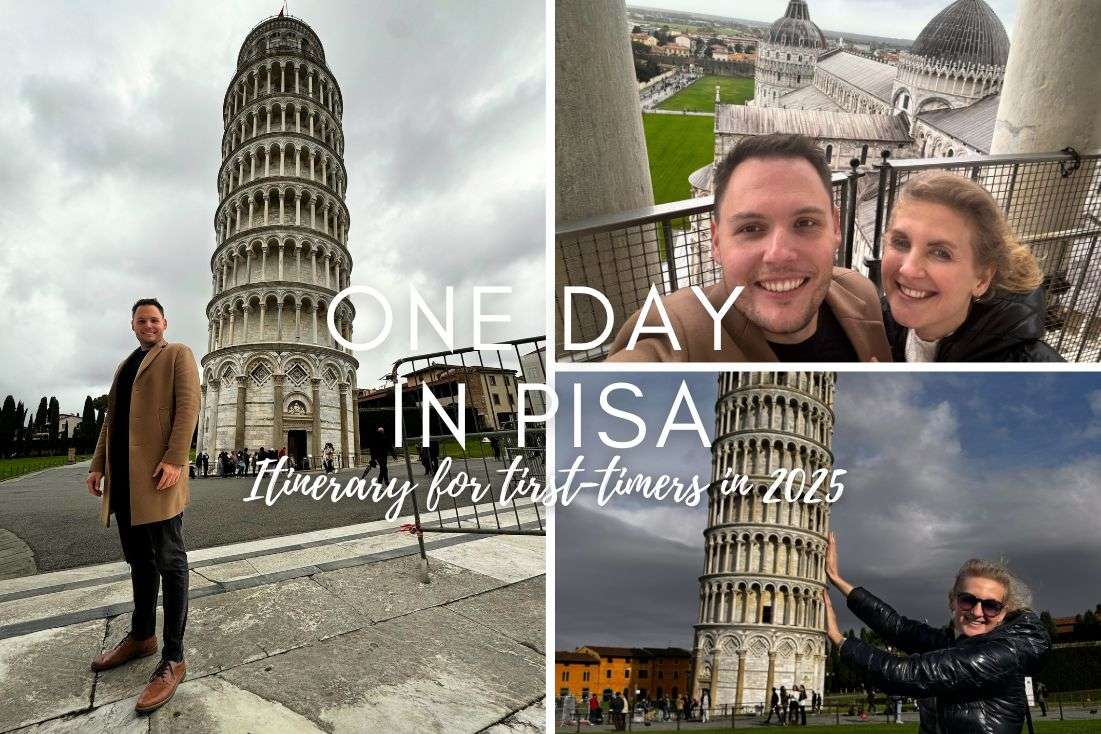
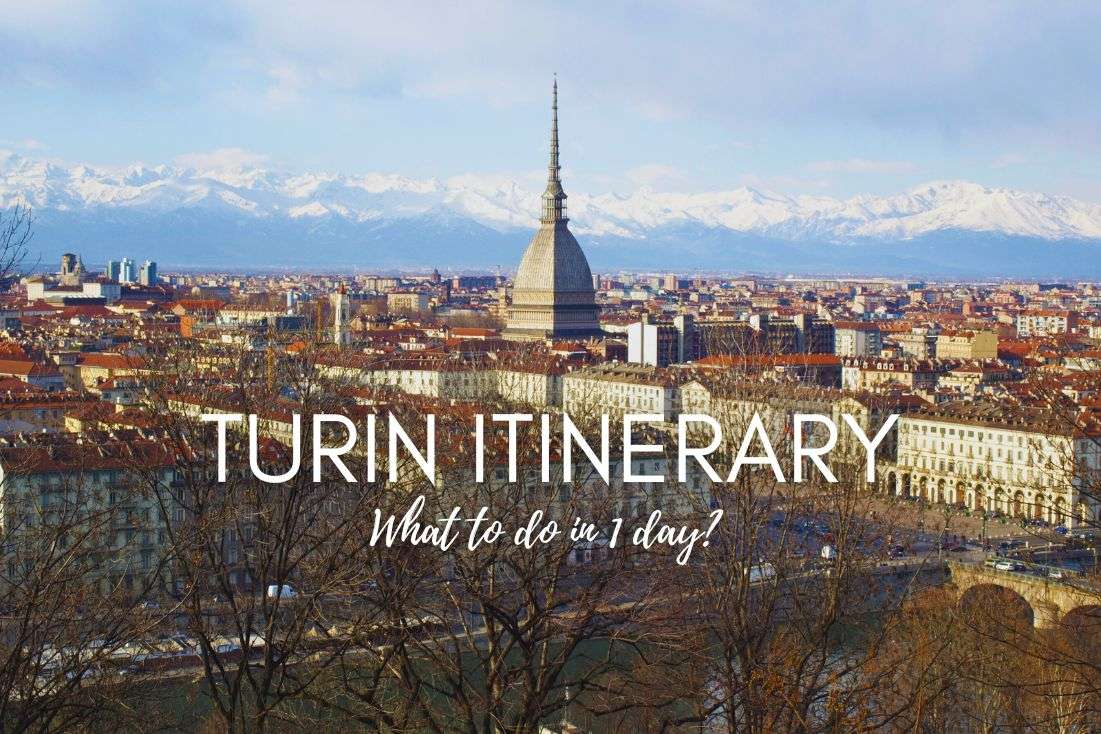




Comments | Thoughts? Give us a shout!